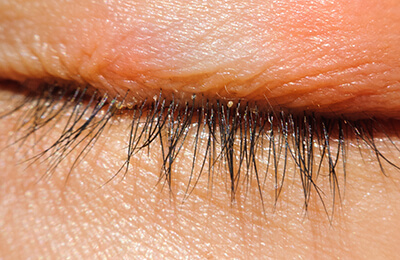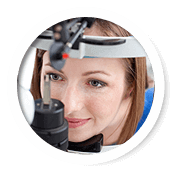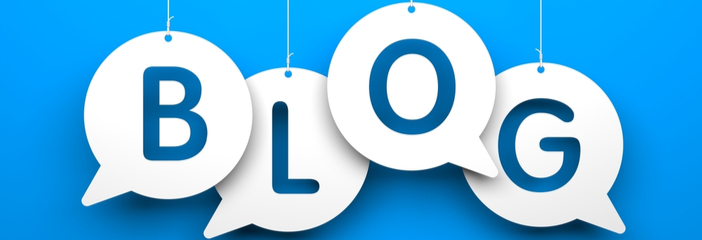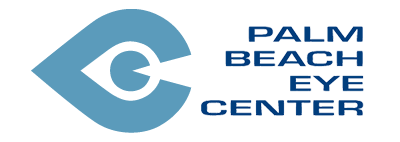Blepharitis
 Blepharitis is an inflammation of the eyelid margins. Symptoms include crusting debris on the eyelashes, redness, soreness, swelling, eyelid sticking, itching, foreign body sensation, tearing and/or contact lens discomfort. Since meibomian glands are located in the eyelids, their dysfunction can cause Dry Eye. Actually blepharitis and dry eye frequently occur together.
Blepharitis is an inflammation of the eyelid margins. Symptoms include crusting debris on the eyelashes, redness, soreness, swelling, eyelid sticking, itching, foreign body sensation, tearing and/or contact lens discomfort. Since meibomian glands are located in the eyelids, their dysfunction can cause Dry Eye. Actually blepharitis and dry eye frequently occur together.
Causes
Blepharitis can be due to a bacterial, parasitic (for example eyelash mites like Demodex) or fungal infection. Blepharitis is due to overgrowth of bacteria that live on the eyelid margins which produce a biofilm (similar to plaque on your teeth). With time, this biofilm acts as a food source for parasitic eyelash mites. Blepharitis is frequently associated with skin conditions like acne rosacea, seborrheic dermatitis and psoriasis.
Treatment
Treatment consists of warm compresses to help melt the crusted residue on the eyelid margins and open the pores of the meibomian glands followed by eyelid scrubs to remove buildup of biofilm and excess bacteria from the lid margins. Scrubs can consist of cleansing pads or eyelid cleansers containing pure hypocholrous acid that is non toxic to cells, or diluted baby shampoo. Omega-3 fatty acids supplements and eating fatty fish such as salmon and sardines as well as flaxseed also help improving blepharitis by improving the function of the meibomian glands and their oily secretions. Topical medication drops or ointment can also be prescribed especially in cases where the eye is secondarily involved, so called conjunctivitis or pink eye. The condition would then be called blepharoconjunctivitis.
The treatment of blephairitis is essential for treating patients with coexisting dry eye as good function of the meibomian glands is critical for a healthy oily layer of the tear film. Blepharitis can also lead to a stye or chalazion, if it is not treated.
Stye/Chalazion
 A stye or hordeolum is formed when a bacterial infection affects either the root (follicle) of an eyelash, called external hordeolum or affects an oil-producing meibomian gland, called internal hordeolum. It produces a painful red and swollen lump in the border of the upper or lower eyelid that lasts several days and usually heals spontaneously. The symptoms you may experience are tenderness to touch, foreign body sensation, tearing, scratching, and sometimes light sensitivity. Styes are commonly associated with blepharitis which needs to be treated if present. When the stye does not spontaneously resolve, it becomes non infectious and is no longer tender. This is called a chalazion and consists of clogged oily material in the meibomian gland.
A stye or hordeolum is formed when a bacterial infection affects either the root (follicle) of an eyelash, called external hordeolum or affects an oil-producing meibomian gland, called internal hordeolum. It produces a painful red and swollen lump in the border of the upper or lower eyelid that lasts several days and usually heals spontaneously. The symptoms you may experience are tenderness to touch, foreign body sensation, tearing, scratching, and sometimes light sensitivity. Styes are commonly associated with blepharitis which needs to be treated if present. When the stye does not spontaneously resolve, it becomes non infectious and is no longer tender. This is called a chalazion and consists of clogged oily material in the meibomian gland.
Treatment
Treatment of a stye/chalazion consists of cold compresses when it is tender to touch because tenderness means that there is active inflammation and cold compresses act as an anti-inflammatory agent. If warm compresses are used at this stage, they may worsen inflammation by bringing more blood flow to the area. Antibiotics are sometimes given for an infected stye. It is best for you not to try to pop a stye as it could spread the infection to the rest of the eyelid. After a stye/chalazion becomes no longer tender, warm compresses followed by gentle massage of the eyelid helps it resolve most of the time. When conservative methods are not effective, it is usually because scar tissue formed around the clogged oil gland and prevents drainage of its oily material. In this case, it needs to be drained with a simple in-office procedure under local anesthesia. Steroid injections are an alternative procedure to allow drainage. However, a side effect of steroid injections is that they could cause an area of hypopigmentation of the surrounding skin especially in dark skinned people. In the event that a chalazion keeps recurring in the same spot of the eyelid, the tissue may be sent for biopsy to rule out the possibility of an eyelid tumor.
Prevention
The best way to prevent a stye/chalazion from developing is to add omega-3 fatty acids supplements, fatty fish such as salmon and sardines as well as flaxseed to your diet to help improve the function of the meibomian glands and their oily secretions. In addition, it is important to keep a once daily schedule of warm compresses and eyelid scrubs to keep the meibomian glands healthy.









